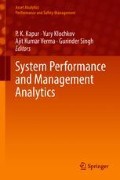Abstract
With the vision of faster in-land transportation of humans and goods, long tunnels with increasing engineering complexities are being designed, constructed and operated. Such complexities arise due to terrain (network of small tunnels) and requirement of multiple entries and exits (network of traffics leading to non-homogenous behaviour). Increased complexities of such tunnels throw unique challenges for performing QRA for such tunnels, which gets compounded due to handful number of experiments performed in real tunnels, as they are costly and dangerous. A combined approach of CFD modelling of scaled down tunnels could be a relatively less resource intensive solution, nevertheless, associated with its increased uncertainties due to introduction of scaling multiplication factors. Further, with the advent of smart system designs and cheap computational cost, a smart tunnel which manages its own traffic of both dangerous goods carriers and other passenger vehicles based on continuously updated dynamic risk estimate, is not far from reality.
Access this chapter
Tax calculation will be finalised at checkout
Purchases are for personal use only
References
Directive 2004/54/EC dated 29 April 2004 of European Parliament and of the council on minimum safety requirements for tunnels in the Trans-European Road Network.
NFPA® 502, 2011 Standard for Road Tunnels, Bridges, and Other Limited Access Highways.
EuroTAP (European Tunnel Assessment Programm) tunnel 2/2008, P. 46–47.
Fire size in tunnels, PhD thesis, Richard Oswald Carvel, 2004.
Comparative analysis of safety in tunnel, Nussbaumer Cornelia, Austrian Road Safety Board.
Risk evaluation for road tunnels, Zulauf Christoph et al, 6th International Conference ‘Tunnel Safety and Ventilation’ 2012, Graz.
Meng, Q., Qu, X., Wang, X., Yuanita, V., & Wong, S. C. (2011). Quantitative risk assessment modeling for nonhomogeneous urban road tunnels. Risk Analysis, 31(3). https://doi.org/10.1111/j.1539-6924.2010.01503.x.
Purser, A. P. (1988). Toxicity assessment of the combustion products. In P. J. DiNenno (Ed.), The SFPE Handbook of Fire Protection Engineering (1st ed., pp. 206–276). Quincy, MA: Society of Fire Protection Engineers.
Persson, M. (2002). Quantitative risk analysis procedure for the fire evacuation of a road tunnel-an illustrative example. Sweden: Lund University, Report 5096.
Nilsen, A. R., & Log, T. (2009). Results from three models compared to full-scale tunnel fires tests. Fire Safety Journal, 44, 33–49.
Beard, A. N. (2009). Fire safety in tunnels. Fire Safety Journal, 44(1), 276–278.
Anet, B., Binggeli, E. (1998). Air blast phenomena due to nuclear and conventional explosions. CH: Gruppe Rütung, Technical Report.
Finney, D. J. (1980). Probit analysis (3rd ed.). Cambridge, UK: Cambridge University Press.
Weger, D., Pietersen, C. M., & Reuzel, P. G. J. (1991). Consequences of exposure to toxic gasses following industrial disasters. Journal of Loss Prevention in the Process Industries, 4(4), 272–276.
Buckingham, E. (1914). On physically similar systems; illustrations of the use of dimensional equations. Physical Review, 4(4), 345–376. https://doi.org/10.1103/PhysRev.4.345.
Quintiere, J. G. (1989). Scaling applications in fire research. Fire Safety Journal. https://doi.org/10.1016/0379-7112(89)90045-3.
Ingason, H., Li, Y. Z. (2010). Model scale tunnel fire tests with longitudinal ventilation. Fire Safety Journal, 45(6–8), 371–384, https://doi.org/10.1016/j.firesaf.2010.07.004.
Ingason, H., Li, Y. Z., & Lönnermark, A. (2015). Runehamar tunnel fire tests. Fire Safety Journal, 71, 134–149. https://doi.org/10.1016/j.firesaf.2014.11.015.
Li, Y. Z., Lei, B., Ingason, H. Study of critical velocity and back layering length in longitudinally ventilated tunnel fires. Fire Safety Journal. https://doi.org/10.1016/j.firesaf.2010.07.003.
Author information
Authors and Affiliations
Corresponding author
Editor information
Editors and Affiliations
Rights and permissions
Copyright information
© 2019 Springer Nature Singapore Pte Ltd.
About this chapter
Cite this chapter
Jena, J.K., Verma, A.K., Uday Kumar, Ajit, S. (2019). Tunnel QRA: Present and Future Perspectives. In: Kapur, P., Klochkov, Y., Verma, A., Singh, G. (eds) System Performance and Management Analytics. Asset Analytics. Springer, Singapore. https://doi.org/10.1007/978-981-10-7323-6_31
Download citation
DOI: https://doi.org/10.1007/978-981-10-7323-6_31
Published:
Publisher Name: Springer, Singapore
Print ISBN: 978-981-10-7322-9
Online ISBN: 978-981-10-7323-6
eBook Packages: Business and ManagementBusiness and Management (R0)

